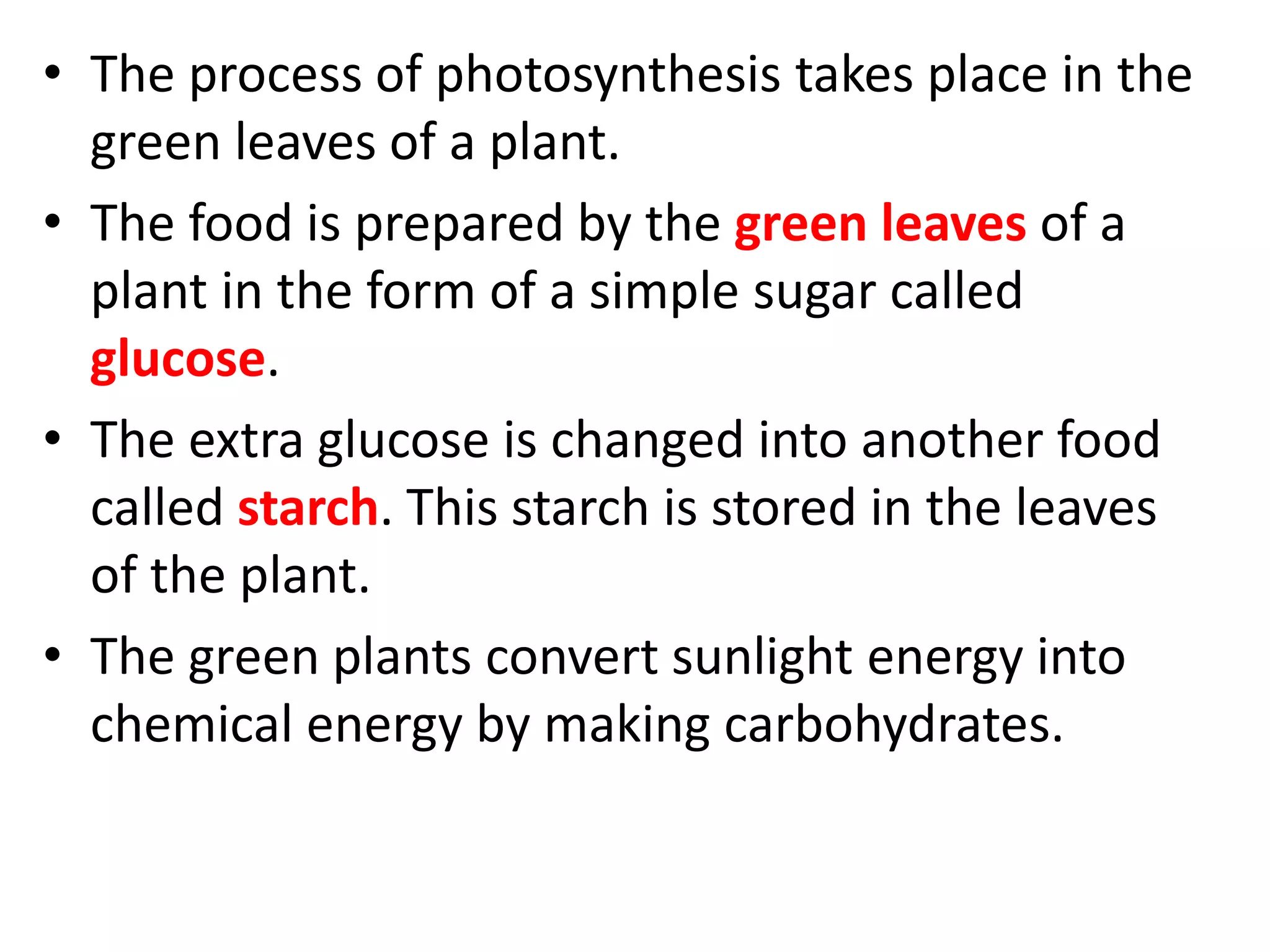Plants are capable of producing their own food through the process of photosynthesis using carbon dioxide, water, and sunlight. Photosynthesis occurs in the chloroplasts of plant leaves and converts sunlight energy into chemical energy stored as carbohydrates. There are two main types of nutrition - autotrophic nutrition where organisms produce their own food, and heterotrophic nutrition where organisms obtain food directly or indirectly from plants. Some plants lacking chlorophyll are heterotrophic and obtain nutrients through parasitism, trapping insects, decomposing organic matter, or symbiotic relationships.























